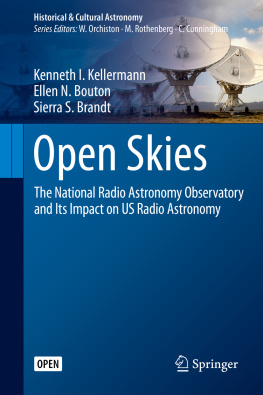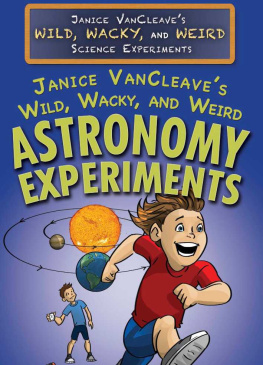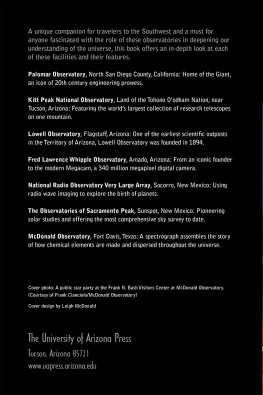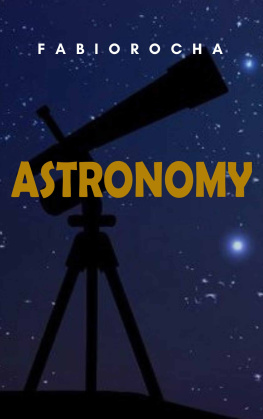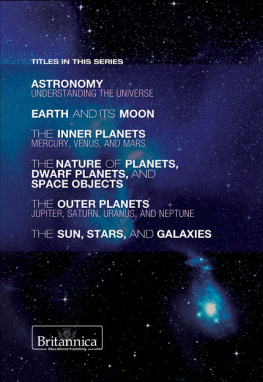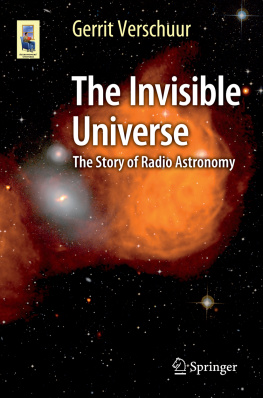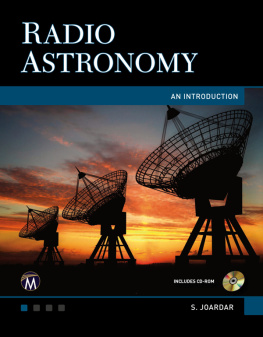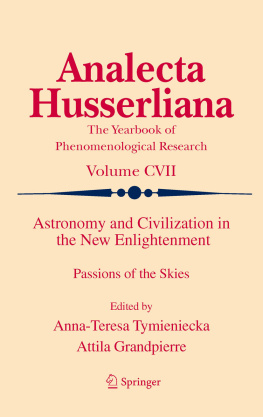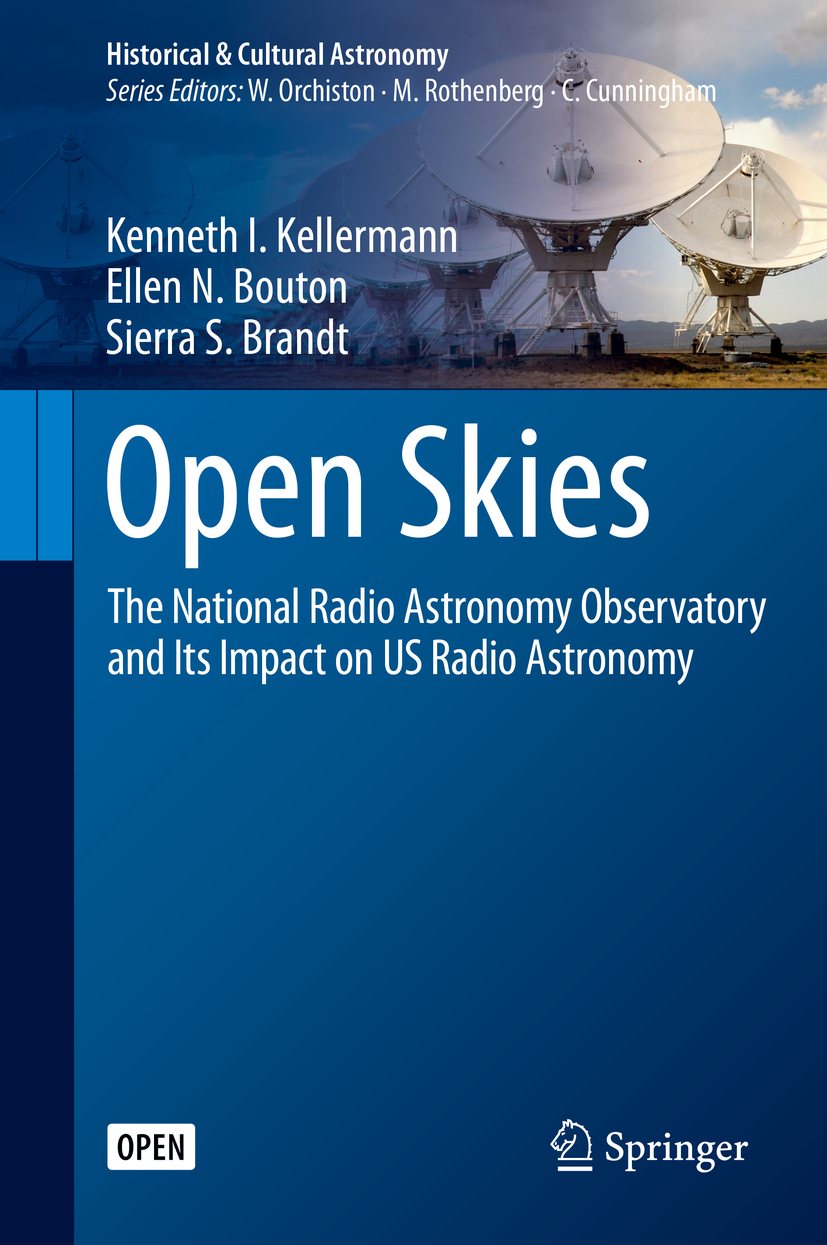Historical & Cultural Astronomy
Series Editors
Wayne Orchiston
Adjunct Professor, Astrophysics Group, University of Southern Queensland, Toowoomba, QLD, Australia
Marc Rothenberg
Smithsonian Institution (retired), Rockville, MD, USA
Clifford Cunningham
University of Southern Queensland, Toowoomba, QLD, Australia
Editorial Board
James Evans
University of Puget Sound, USA
Miller Goss
National Radio Astronomy Observatory, USA
Duane Hamacher
Monash University, Australia
James Lequeux
Observatoire de Paris, France
Simon Mitton
St. Edmunds College Cambridge University, UK
Clive Ruggles
University of Leicester, UK
Virginia Trimble
University of California Irvine, USA
Gudrun Wolfschmidt
Institute for History of Science and Technology, Germany
Trudy Bell
Sky & Telescope, USA
The Historical & Cultural Astronomy series includes high-level monographs and edited volumes covering a broad range of subjects in the history of astronomy, including interdisciplinary contributions from historians, sociologists, horologists, archaeologists, and other humanities fields. The authors are distinguished specialists in their fields of expertise. Each title is carefully supervised and aims to provide an in-depth understanding by offering detailed research. Rather than focusing on the scientific findings alone, these volumes explain the context of astronomical and space science progress from the pre-modern world to the future. The interdisciplinary Historical & Cultural Astronomy series offers a home for books addressing astronomical progress from a humanities perspective, encompassing the influence of religion, politics, social movements, and more on the growth of astronomical knowledge over the centuries.
More information about this series at http://www.springer.com/series/15156
Kenneth I. Kellermann
National Radio Astronomy Observatory, Charlottesville, VA, USA
Ellen N. Bouton
National Radio Astronomy Observatory, Charlottesville, VA, USA
Sierra S. Brandt
Consultant to the National Radio Astronomy Observatory Archives, Providence, RI, USA
ISSN 2509-310X e-ISSN 2509-3118
Historical & Cultural Astronomy
ISBN 978-3-030-32344-8 e-ISBN 978-3-030-32345-5
https://doi.org/10.1007/978-3-030-32345-5
This book is an open access publication.
The Editor(s) (if applicable) and The Author(s) 2020

Open Access This book is licensed under the terms of the Creative Commons Attribution 4.0 International License (http://creativecommons.org/licenses/by/4.0/), which permits use, sharing, adaptation, distribution and reproduction in any medium or format, as long as you give appropriate credit to the original author(s) and the source, provide a link to the Creative Commons license and indicate if changes were made.
The images or other third party material in this book are included in the book's Creative Commons license, unless indicated otherwise in a credit line to the material. If material is not included in the book's Creative Commons license and your intended use is not permitted by statutory regulation or exceeds the permitted use, you will need to obtain permission directly from the copyright holder.
The use of general descriptive names, registered names, trademarks, service marks, etc. in this publication does not imply, even in the absence of a specific statement, that such names are exempt from the relevant protective laws and regulations and therefore free for general use.
The publisher, the authors and the editors are safe to assume that the advice and information in this book are believed to be true and accurate at the date of publication. Neither the publisher nor the authors or the editors give a warranty, expressed or implied, with respect to the material contained herein or for any errors or omissions that may have been made. The publisher remains neutral with regard to jurisdictional claims in published maps and institutional affiliations.
Cover Caption: NRAOs Very Large Array, located on the Plains of San Agustin, 50 miles east of Socorro, New Mexico. The NRAO is a facility of the NSF operated under cooperative agreement by AUI. Credit: NRAO/AUI/NSF.
This Springer imprint is published by the registered company Springer Nature Switzerland AG.
The registered company address is: Gewerbestrasse 11, 6330 Cham, Switzerland
An optical telescope is visual and interesting. A radio telescope is an electronic instrument and you cant really see a lot of what makes it work. When its done all you get is a computer printout.
Comments from an anonymous NSF referee.
We dedicate the book to the memory of Dave Heeschen, whose wise and forceful leadership and commitment to Open Skies led NRAO to become the worlds premier radio astronomy observatory.
Foreword
I know Ken Kellermann, well. We both did our PhDs in radio astronomy in the 1960s, supervised by the famous radio astronomer John Bolton. Ken got his lessons on how to build a telescope and do research when John was building the Owens Valley Observatory at Caltech while I started building the interferometer at Parkes when John and Ken moved from Caltech to Australia. Many years later I spent a challenging but rewarding 7 years working for NRAO as the first director of the newly completed VLA radio telescope in New Mexico. This was sandwiched between my time at Westerbork and the Australia Telescope. To Ellen Bouton, we owe a great debt for the legacy of NRAOs extensive archives of historical material which underpin the impressively detailed source material used in this book. Sierra Brandts background as a historian of twentieth-century science nicely complements the contributions of the other two authors.
While this book is very clearly focused on the development of the US National Radio Astronomy Observatory (NRAO), it touches on many more broader issues, including the birth of a national facility, the open access policy for scientific research, the wider societal implications of searching for extraterrestrial intelligent life, and lessons learned from major construction projects. It is far more than just the history of NRAO. By discussing the development of NRAO in an international context the authors have also written a history of the development of radio astronomy as seen from a US perspective. They start from the well-covered ground when Karl Jansky of the Bell Telephone Laboratory discovered radio emission from the Milky Way in 1933, through the somewhat idiosyncratic but innovative experiments over the next decade by one individual, Grote Reber, to the major technology developments during World War II.

